An Exploration of New Work (1) 'Heart- land 2016' by artist In Kyung Kwon
2017-07-24 l Hit 1865
An Exploration of New Work
(1) 'Heart- land 2016' by artist In Kyung Kwon
| The Korean Artist Project (KAP) website, which was designed to introduce Korean contemporary art to the international arena, has been ongoing since May 2011 and has currently hosted 109 online archives of Korean contemporary artists. The "An Exploration of New Work" series, starting from this month's newsletter, is a feature where new work from a KAP artist will be introduced monthly and will continue up until this December: five times in total. For the first artist, I will introduce 'Heart-land 2016' by In Kyung Kwon, a 6th year member of KAP. Note from the editor |
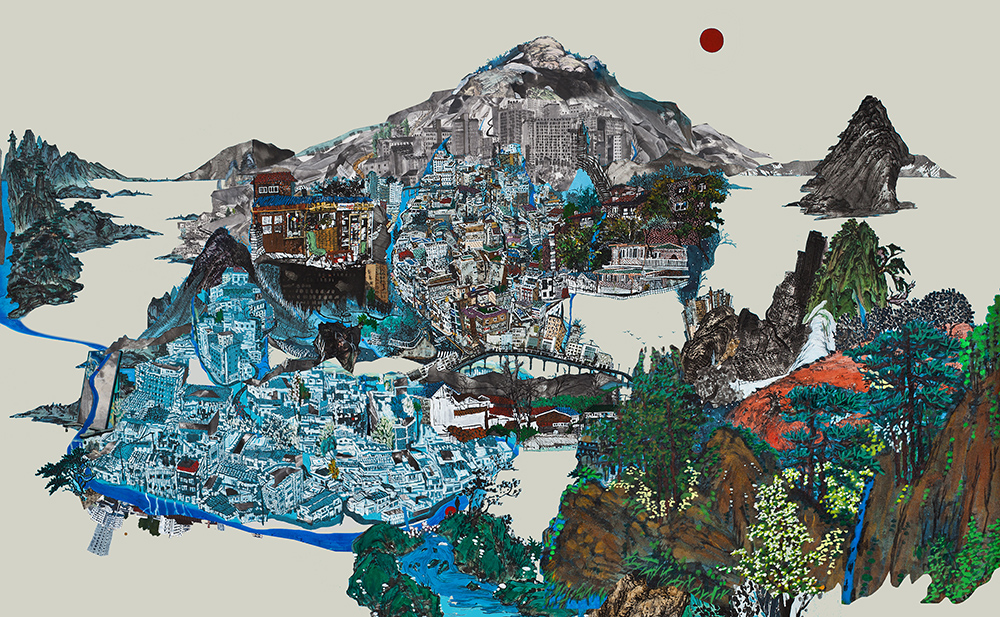 |
In Kyung Kwon's 'Heart-land 2016' is the work installed at the Uikyung Railway's Jeongneung Station and will be accessible to the public in September after its grand opening. This large-scale three-panel work, 290 cm in height and 470 cm in width, was selected in a public contest to determine what artwork would be installed in Jeongneung Station in 2015 and fill part of the station's wall.
Artist In Kyung Kwon said the work was toned down a little, since it will be displayed in the station not an exhibition hall, and exposed to the general viewers regardless of their age, sex, and tastes.
She explained, "There were bizarre images in the existing work, and those parts have been slightly refined. However, the techniques of expression and the subjects to be covered do not differ greatly from the existing work."
At first glance, this work looks like a landscape painting with mountains, seas, and rivers, but if you look at it closely, you can see that it is a city with various residential forms. If so, is Jeongneung the background of the work? The artist said that the background is not necessarily Jeongneung. She added, "Jeongneung Station is not only for those who live there but also for the people who come from other regions. I want viewers to be reminded of a place they have in mind that brought them peace, while getting the sense of Jeongneung.“
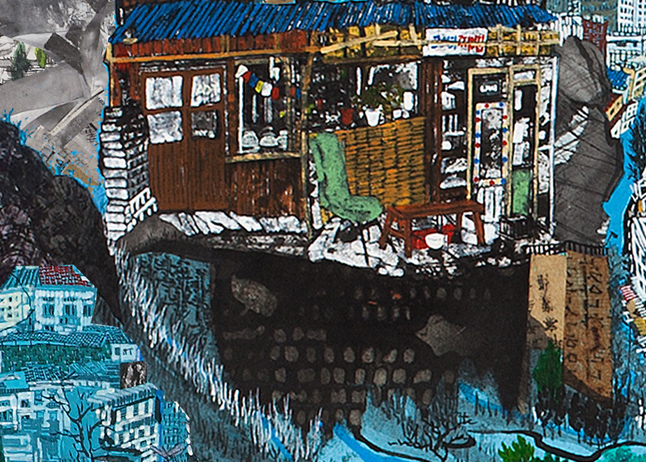 |
'Heart-land 2016' is an extension of Heart-land, introduced in a 2013 exhibition. The title 'heart-land' means a central(heart) area, and the artist explains that the term means a place that is relatively safe against external attacks, and economically and politically independent.
The description of the title can be found in a part of the artist's notes below.
"I saw Jeongneung as a heart-land for people who are dwelling within Bukhansan. The spirit of nature is surrounding and inside the city we live in and the heart-land of each human being is centered around Jeongneung, in which the spirit of the Joseon Dynasty lives on. The imagination of Heart-land is connected to an attempt to return to the origins of life, that is, to go to the very core of it, and to reach the ultimate rest, utopia. The work was made to express that hope."
- From the artist's notes
The artist added an explanation that the work actually is closer to heterotopia than to utopia. Utopia means "an ideal world," heterotopia differs in its meaning: an ideal world, realized in reality, and heart-land means embodying utopia; a resting place, in reality.
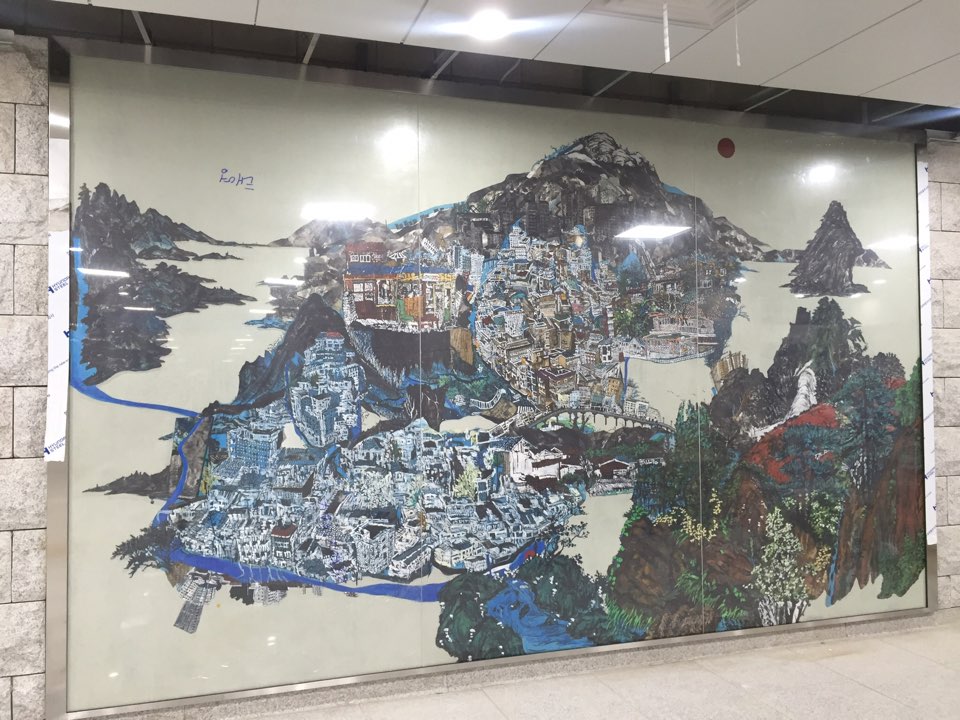 |
There are gray and dark cities here and there in the work. The artist said that the meanings of places differ from person to person, "Someone can feel at peace around colorful things, but some people may feel emotional attachments in a space with gray colors. People typically express cities in gray, but for me, who was born and raised in a city, cities are never just gray. The world is quite complex. I want to reflect on what happens in each place and with various forms of life. "
However, the artist said she is cautious talking about healing viewers through her work. Its only role is to give the viewers a story, so that people can be reminded of places that bring them peace.
The work seems to be a painting entirely, but you can find traces of collage in some areas. For example, a shape that looks like a house turns out to be a disparate collaged medium in which certain sentences are engraved. In her work, the collage is a method that can be found without any difficulty. She explained, "I used to create work using a lot of collage methods. Although the techniques may be familiar to the public, it did not effectively deliver the concept that I wanted to communicate. So, these days, I have been making pictorial collages instead.“
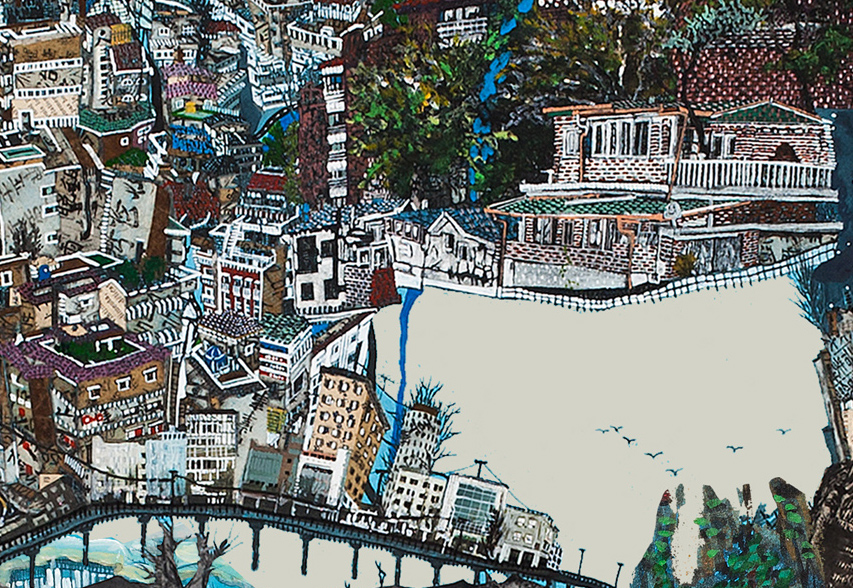 |
In artist In Kyung Kwon's work, collage is a very effective technique. It is an efficient way to link unconnected scenes, like the sequences of a film, as the artist does not depict a city as a whole landscape but as separate resting places that each individual has in his or her mind.
Eastern painting techniques are also worth noticing. In fact, artist In Kyung Kwon uses various media, so it's hard to consider her a traditional Eastern painter. However, her work is also different from a traditional Western painting, since each place depicted in the work has its own viewpoint like a traditional Eastern painting. The artist explained that the various viewpoints are characteristic of Eastern paintings compared to Western paintings: Western paintings use viewpoints from one position, but Eastern paintings' viewpoints change as the painter moves through the scene. Therefore, according to the artist's explanation, the objects shown in her work have various viewpoints; from far away, from a bird's eye view, and from some seated position, and sometimes unexpected objects can appear.
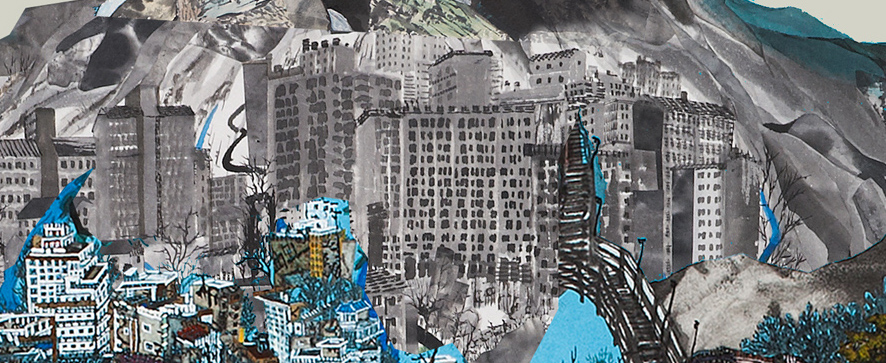 Gray buildings can also be a place of rest for someone who has memories of them. |
Her use of veiwpoints has been further developed after 2014 as she worked on 'The Seoul Project' with artists Nuengsaeng PARK, Youngil PARK, and Pungryu CHO. The project was planned in order to reinterpret some areas of Seoul by walking up the city's famous mountains, such as Suraksan, Inwangsan, Bugaksan, and Bukhansan, and the roads around the perimeter. As a result, she was able to see places she had not known before, and she added nature around Seoul in her work.
She will exhibit her work at the Dorothy Salon in January next year and at GYEOMJAE JEONGSEON ART MUSEUM in August.
Photographs provided by artist In Kyung Kwon
2017. 8. 9.ⓒKorean Artist Project
Text and images may not be reproduced, reprinted, or redistributed without express consent.








